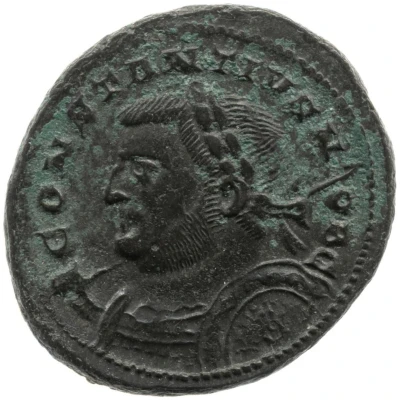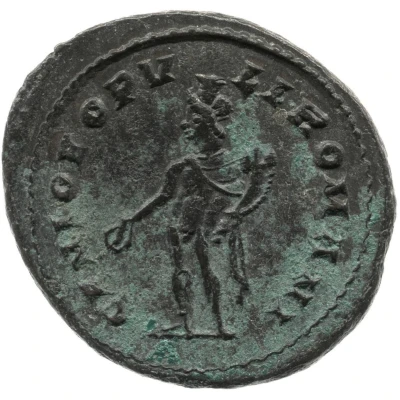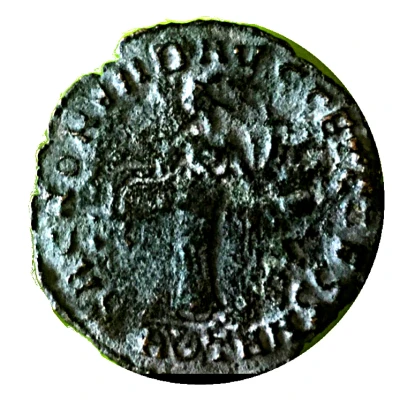


© British Museum
Nummus - Constantius I as Caesar Cuirassed bust left, spear over right shoulder, shield on left arm, CONSTANTIVS NOB C; GENIO POPVLI ROMANI; Londinium
| Bronze | 11.56 g | 28 mm |
| Issuer | Rome › Roman Empire (27 BC - 395 AD) |
|---|---|
| Emperor | Maximian Herculius (Marcus Aurelius Valerius Maximianus) (286-305) |
| Type | Standard circulation coin |
| Years | 303-305 |
| Value | Nummus / Follis (¼) |
| Currency | Argenteus, Reform of Diocletian (AD 293/301 – 310/324) |
| Composition | Bronze |
| Weight | 11.56 g |
| Diameter | 28 mm |
| Shape | Round (irregular) |
| Technique | Hammered |
| Orientation | Variable alignment ↺ |
| Demonetized | Yes |
| Updated | 2024-10-05 |
| Numista | N#373565 |
|---|---|
| Rarity index | 100% |
Reverse
Genius, wearing modius, nude, chlamys draped over left shoulder, standing left, holding patera in right hand and cornucopiae in left hand.
No mintmark.
Script: Latin
Lettering: GENIO POPV-LI ROMANI
Translation:
To the Genius (guardian) of the Roman people.
London.
Interesting fact
One interesting fact about this coin is that it features an image of Constantius I as Caesar, which is significant because Constantius I was the father of Constantine the Great, who would later go on to become one of the most famous emperors in Roman history. This coin was minted during a time when Constantius I was still serving as Caesar, or junior emperor, under his father, Maximian. The image of Constantius I on the coin is surrounded by symbols of Roman power, such as the spear and shield, and the inscription "GENIO POPVLI ROMANI" (Genius of the Roman People) suggests that the coin was intended to promote the idea of Roman strength and unity.

